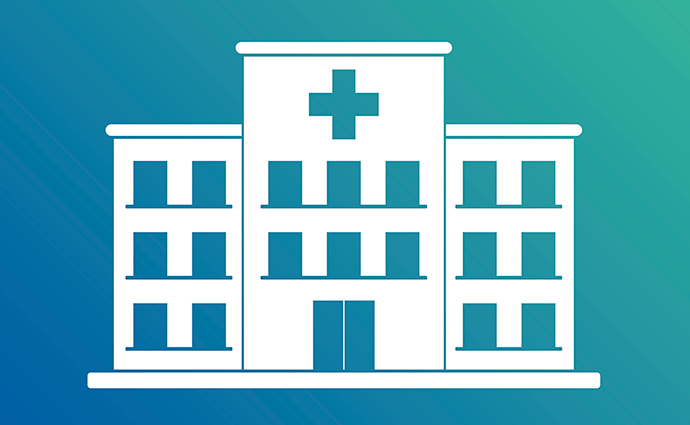How Hospitals Can Raise Patient Satisfaction, CAHPS Scores
Improving patient satisfaction scores, such as CAHPS, is key for driving practice reputation and reimbursements.

Source: Thinkstock
- Healthcare organizations with high patient satisfaction and CAHPS scores see a multitude of benefits. High patient satisfaction scores usually result in higher reimbursement payments from CMS, better patient retention rates, and the assurance for hospital staff that they fostered a positive experience for patients.
A May 2016 report from Vocera showed that patient satisfaction is the top-ranked priority at healthcare organizations. Due to the importance of ensuring favorable feedback from patients, the demand for patient experience officers and patient advocate executives is increasing, with these professionals pulling equal rank with other C-suite executives, the report said.
The primary measure for patient satisfaction is the Consumer Assessment of Healthcare Providers and Systems (CAHPS). The CAHPS survey is developed and funded by the Agency for Healthcare Research and Quality (AHRQ) in partnership with CMS, and forms a component of some value-based reimbursement programs.
CMS also uses CAHPS scores to inform its star ratings, which are publicly available ratings about the quality of healthcare facilities.
Several types of CAHPS surveys are utilized throughout the care continuum, ranging from hospitals to nursing homes to health plans. However, the Hospital CAHPS (HCAHPS) and Clinician and Group CAHPS (CGCAHPS) are the most prominent and commonly used surveys.
Both surveys measure many of the same factors, including nurse care, doctor care, and facility environment.
The HCAHPS survey also includes questions about experiences within the hospital, including pain management, and continuity of care experiences.
CGCAHPS surveys target their questions to the general practitioner, asking questions about ease of healthcare access and how often the patient has been visiting the office.
Because HCAHPS and CGCAHPS are used for both reimbursement and patient rating purposes, it is important for healthcare organizations to improve their scores. Healthcare organizations can improve their CAHPS scores by understanding what is important to patients, what the surveys measure, and how to meet patient needs.
Improving patient-provider communication
The first two sets of HCAHPS questions pertain to nurse and physician communications with patients. These questions ask whether nurses and physicians communicated clearly with patients, and whether patients understood their diagnoses, prognoses, and treatment options.
Clear communication about healthcare information is integral to a positive healthcare experience, experts say. Hospitalization is often a stressful and worrying time for patients, and made even worse when clinicians do not adequately communicate what is going on and how they will treat a patient’s ailments.
In addition to allaying patient worry, providing meaningful explanations of conditions and treatments will help the patient taken ownership of her own health.
“Patients have a need for information,” explained Deirdre Mylod, PhD, Executive Director of the Institute for Innovation and Senior Vice President of Research and Analytics at Press Ganey.
“It’s not just making consumers happy to meet that need, but it’s also providing the right care. When you give people the right information, they can engage in care, they can be active participants, they’re better prepared to care for themselves at home, they’re less likely to be readmitted.”
Clear communication will require collaboration between the different members of the care team, added Mylod.
“As a patient, when one team member tells me one thing and somebody else tells me another, now I’m afraid and I’m thinking you’re not working together. Now I’m more scared than I need to be in a hospital,” she pointed out.
HCAHPS also asks patients whether nurses and physicians treated them with respect and empathy. Clinicians must tap into their interpersonal skills to provide compassionate care to their patients, while being mindful of cultural norms and barriers.
The healthcare industry might be falling short in this respect. A January 2017 survey conducted by Oliver Wyman and the Altarum Institute found that 40 percent of low-income patients have walked away from appointments feeling disrespected.
The survey, funded by the Robert Wood Johnson Foundation, showed that in addition to reducing patient satisfaction, lacking compassion also lowered quality of care. Patients who felt disrespected were three times less likely to trust their clinicians, and two times less likely to adhere to treatments.
Healthcare organizations should support their clinicians in pursuit of being more empathic. Organizations can host cultural sensitivity seminars, work with patients to continue to develop their interpersonal skills, and educate clinicians on evidence-based best practices for enhancing patient-provider communication.

Source: Thinkstock
Improving the physical hospital environment
Two HCAHPS questions pertain to the hospital environment: hospital cleanliness and hospital noise levels.
In order to maintain an appropriately clean and sanitary facility, organizations must support their custodial staff and reinforce the importance of a healthcare facility being clean.
The American Hospital Association has long advocated for improving the hospital setting for patient satisfaction. In a 2016 guide, AHA listed the ways in which organizations can create environments more suitable for patient rest and recovery.
To create a quiet and peaceful environment, AHA says hospitals should implement and enforce rules about quiet hours and lights-out times.
“It makes sense that patients rate hospitals poorly when they cannot get good sleep or rest and have the additional stress of noise added to the already stressful situation of being unwell,” AHA wrote. “Data shows that noise in hospitals is the factor that scores lowest on HCAHPS scores nationwide.”
Healthcare organizations can take it a step further than HCAHPS mandates. Many hospitals are turning to their patients to inform room design that will facilitate a more comfortable experience.
When designing its new facilities in Delaware and Orlando, leaders at Nemours Children’s Health consulted with its patient and family advisory board to decide which features would best suit pediatric patient rooms.
“The parents came in and tested all of the furniture that they might be sleeping on in the rooms. They provided input into what we actually purchased,” recalled Nemours Chief Information Officer Bernie Rice.
“The children came in as well and helped pick colors and room layouts as far as if the counter was too high,” he continued. “They were very valuable and heavily influenced our construction and design to make sure it was a very family- and patient-friendly environment.”
Being attentive and reducing unnecessary discomfort
One highly-debated part of patient experience surveys is pain management. Amidst a raging opioid abuse epidemic, many experts question whether pain management should be a part of patient satisfaction scores that result in provider reimbursements. By tying payments to pain management, some clinicians may feel compelled to prescribe opioids when there could be other potentially less-risky forms of pain management.
In November 2016, CMS removed the pain management questions from the HCAHPS survey. However, the agency maintained that pain management is an important part of patient care and experience.
“CMS continues to believe that pain control is an appropriate part of routine patient care that hospitals should manage, and is an important concern for patients, their families, and their caregivers,” CMS said in a public statement. “CMS is continuing the development and field testing of alternative questions related to provider communications and pain, and will solicit comment on these alternatives in future rulemaking.”
While the pain management portions of the HCAHPS survey are currently under construction, clinicians should still work to reduce unnecessary patient discomfort.
Press Ganey is adopting this approach when consulting on patient experience, Mylod said.
“The way that we approach improvement for patient experience measures is to reframe it,” she explained. “The exercise is not to make consumers happy. The exercise is to reduce patient suffering.”
To boost scores in this realm, Mylod suggests clinicians – especially nurses – become even more attentive. This means not only answering call buttons, but also making regular rounds to hospital beds to ensure they meet all patient needs.
During these rounds, nurses can ask if the patient needs assistance using the restroom or if they need an object, such as a television remote, handed to them. Paying attention to these seemingly inconsequential needs could reduce adverse safety events, Mylod explained. If a patient gets up to retrieve a book, for example, he could fall and hurt himself, affecting the patient experience, increasing length of stay, or requiring additional expenses related to an injury.

Source: Thinkstock
Streamlining the discharge and follow-up process
HCAHPS asks patients about how doctors and nurses managed continuous care and the discharge process. The survey asks whether clinicians checked in on post-discharge care plans, made it clear which provider will follow-up with ongoing needs, and whether that care will be adequate for the patient’s condition.
At patient advocacy group Planetree, leaders have developed a hospital discharge plan to ensure clinicians meet patient needs.
The plan includes identifying a family care partner that will help take care of the patient following hospital discharge, said Planetree’s Director of Research Jill Harrison, PhD.
From there, clinicians check in with the patient and appointed caregiver to determine which functions they will need to learn for optimal at-home care.
“Planetree has a program that allows people to say that they want help with wound changes, or help ambulate their loved one, or help check a tracheotomy if the patient has one,” Harrison said. “Caregivers go through a training program with the nursing staff and learn how to provide that care so that when patients get out of the hospital setting their family members are ready to take that all on.”
Other key healthcare players are advocating for a similar strategy. AARP has been sponsoring a law in state legislatures across the country to support family caregiver engagement. The organization says caregiver engagement will help support continuity of care.
Research confirms that family caregiver engagement can reduce hospital readmissions by up to 25 percent.
Hospitals that implement family caregiver engagement and discharge plans may see not only increases in HCAHPS scores, but in quality of healthcare, as well.
The importance of improving patient satisfaction and CAHPS scores is well-founded. These scores help inform CMS value-based reimbursements and hospital ratings published on the CMS website. Many healthcare organizations also use these scores to inform their own internal practice improvement processes.
However, when it comes to improving patient satisfaction, it is also important for practice leaders to look beyond the survey. Improving patient satisfaction means understanding the facility’s unique patient population and its needs. What will please one group of patients may not satisfy another, and hospital leaders must bear that in mind.
While supporting initiatives specifically geared toward improving CAHPS scores, healthcare organizations should also consider projects that will serve their unique population.
Issuing practice-specific patient input surveys or consulting with a patient advisory council will help healthcare organizations move beyond surface-level satisfaction and find solutions that will be truly meaningful for patients.
